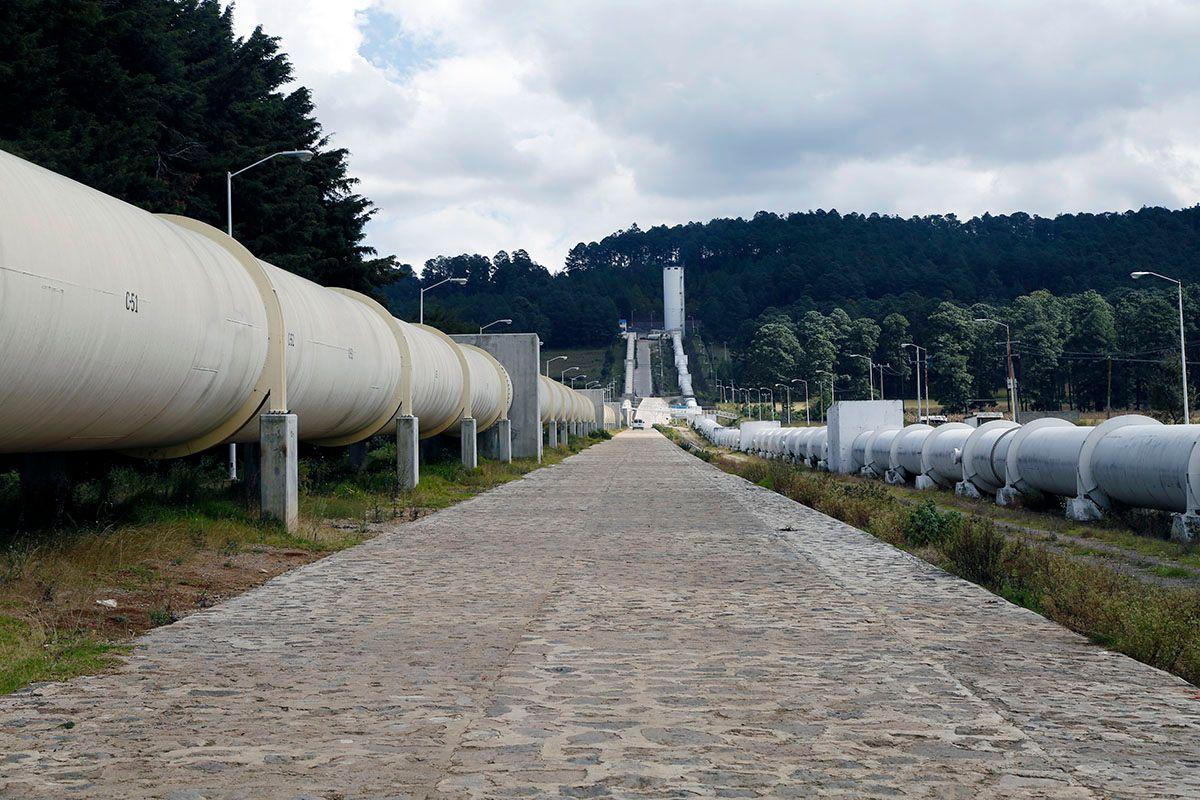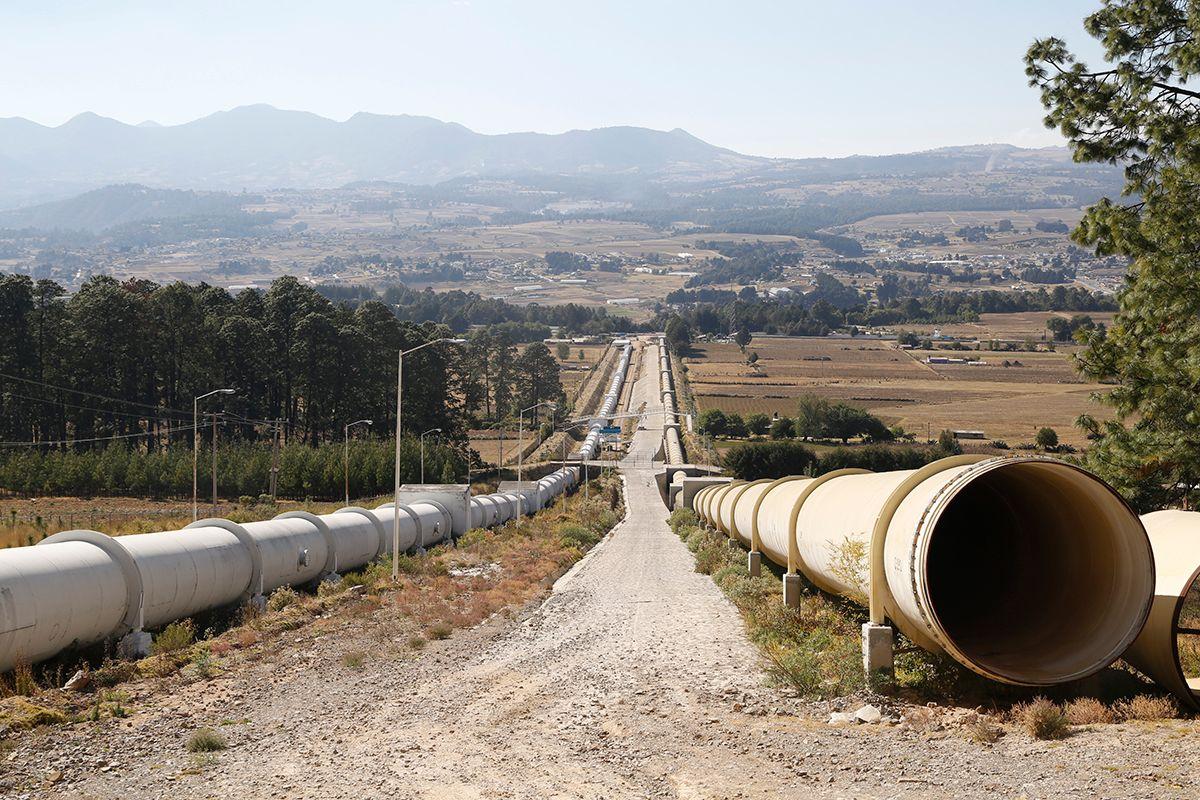The center of the country has one, three or five months of water left. This is indicated by some estimates from experts who have been circulating through various media since the beginning of the year on the water availability of the Cutzamala System that supplies Mexico City and the State of Mexico. Everyone assures that Day Zero is about to come.
At the same time, public concern is increasing. During the first two months of the year, demonstrations were held in the municipality of Valle de Bravo, in the State of Mexico, and in the south of Mexico City by the Coordination of Villages of Xochimilco.
The federal government insists that there is no need to worry. During the morning press conference on February 14, it was reported that solutions and agreements are already being developed to ensure the supply of water in the Valley of Mexico. The main ones are the maintenance of wells and the drilling of new ones. So Day Zero is far away.
Measuring Day Zero
“Day Zero is not that dams run completely out of water, but rather that they reach a level where it is technically very difficult to pump water and distribute it,” explained Manuel Perló, a researcher at the Social Research Institute of the National Autonomous University of Mexico (UNAM).
The term Day Zero began to become popular in 2018, when Cape Town, in South Africa, reached its lowest supply levels. A process that worsened in the face of several years of previous droughts. This set off alerts for other large cities such as Barcelona, Spain; São Paulo, Brazil; and Mexico City, which also rely on surface water, meaning that it is captured by a dam system.
“I think that Day Zero can be applied to the Cutzamala System in the sense that if the rains don't arrive in the middle of the year there will be a situation in which water cannot be pumped into the dam system,” Perló said.
Faced with scarcity in several regions, the Cutzamala System generally maintains the storage capacity of dams above 35%. In order to establish Day Zero, it would have to decrease to an average of 15%.
However, although the rainy season is an important factor, the fact that the supply of the Cutzamala System increases does not mean that water deficit problems will be solved, Perló said. Well, there is a loss of capacity that is historically caused by factors such as lack of investment in infrastructure or uneven demand for industrial activities.

An uneven topic
“In many parts of the country they have been experiencing Day Zero for a long time. It seems like a buzzword, but in reality there are many regions where Day Zero has arrived,” said Patricia Ávila, a researcher at the Institute for Ecosystem Research and Sustainability at the UNAM.
The regions are mainly indigenous or rural, such as the Purépecha plateau in Michoacán or the Mazahua area in the State of Mexico, where they have been living under reasoning or tanking of water for decades. But this does not leave out urban areas such as Ecatepec or Iztapalapa.
“Generally, what happens in cities as unequal as those in Mexico is that rich areas are always assured of supplies and historically poor areas are not. By prioritizing certain areas or certain types of activities in water consumption, you are detrimental to others,” Ávila explained.
In a broad sense, the researcher pointed out, Day Zero would mean that even areas that have been privileged reach levels where they have to start rationing.
In addition, cities such as the country's capital have to bring water from other regions because their own resources are not enough. Consumption is not limited to domestic consumption, there is also a high demand for services and industries that increases the situation of inequality.
“Politically speaking, there are groups such as real estate developers, for example, that want to continue with an important dynamic by creating new subdivisions, or that consume a lot of water, such as golf courses or industrial parks. So in a way, these groups are also pressuring (the authorities) to require infrastructure,” added the researcher.
The actions
The government's main measures to find solutions to Day Zero are focused on creating infrastructure, such as drilling new wells. But for researcher Manuel Perló, it is more urgent not to lose sight of structural problems in the operation of the network, such as leaks or water theft.
“It's not that (the infrastructure) has been left completely abandoned, but let's just say that it hasn't been proper maintenance or repair or modernization... Even before starting to build new wells, before doing other actions, this should have the number one priority,” he explained.
In addition to this, the region of the Cutzamala basin and sub-basins itself have their needs, such as the increase in demand due to the growth of the agricultural area. The same ones that compete with each other for the shipment of water that is carried out.

Some other necessary actions, indicated by the researcher, are: the use of rainwater, but not only through domestic collection, but also through the roofs of shopping centers or buildings that may have a larger collection; and investment and modernization in water treatment plants.
Regarding citizen participation, the specialists interviewed for this publication agree that there is no direct responsibility on the part of users, but they can participate.
“I think the most important measure is not to go to the individual. The individual is an ethical environmental decision made by everyone to reduce their water footprint. But really where the big decisions when it comes to water management in the city are those who are responsible for providing the service,” said Ávila.
A broader view is needed to see the water problem, according to the researcher. Well, water is also related to forests that allow the generation or alteration of ecosystems due to climate change.
“Collective actions at a more local level can be very useful for defending against looting, misuse or pollution. They are very important, but without losing (sight) that the problem is being caused structurally and at larger levels of decision,” he concluded.



Comentarios (0)